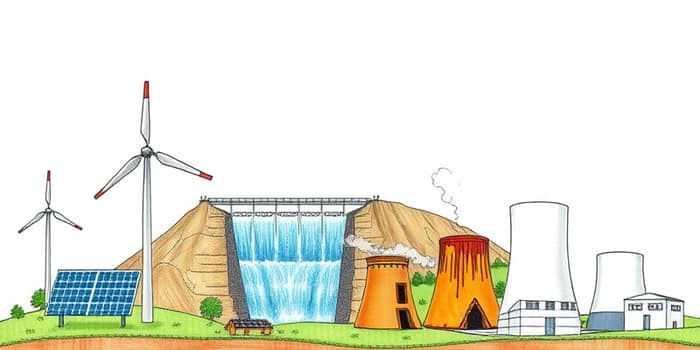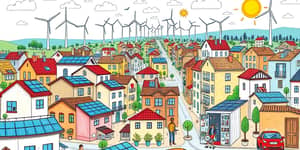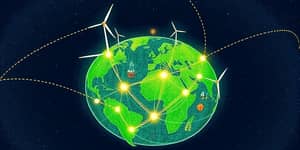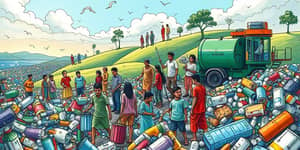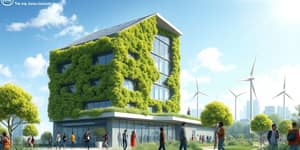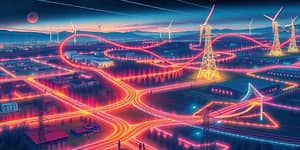Energy shapes our planet’s future: powering homes, industries, and transportation. As environmental concerns intensify, two terms—‘clean energy’ and ‘renewable energy’—dominate conversations. Though often used interchangeably, they carry distinct meanings that influence policy decisions, investment strategies, and technology development. Understanding these differences helps communities adopt effective solutions and navigate the complex global energy landscape.
Defining Renewable Energy
Renewable energy refers to sources that are sustainably replenished from nature and will not deplete over human time scales. These sources rely on natural processes that continuously renew their supply, making them essential for long-term energy security and resilience against resource depletion.
Common examples illustrate the breadth of renewable options:
- Wind power harnessed from air movements
- Solar energy captured from sunlight
- Hydroelectric power generated by water flow
- Geothermal heat sourced from Earth’s interior
- Biomass derived from organic materials
Understanding Clean Energy
Clean energy emphasizes environmental impact, defined by zero operational greenhouse gas emissions or minimal pollutant release during production and consumption. The goal is to minimize air pollution and combat climate change by reducing carbon dioxide and other harmful emissions.
While most clean energy is renewable, some sources like nuclear power qualify as clean due to their negligible direct emissions, despite relying on finite, non-renewable fuel sources. This highlights the nuanced distinction between cleanliness and renewability.
Key Conceptual Differences
At its core, renewable energy focuses on resource availability, while clean energy targets emission reductions. A source can be renewable yet still produce pollutants, or it can be clean but draw on finite raw materials. Recognizing this separation is critical when evaluating energy portfolios or drafting policy frameworks.
Below is a comparative overview:
Types and Examples
Examining specific sources reveals where clean and renewable definitions converge or diverge. This clarity helps stakeholders choose technologies that align with both environmental goals and resource strategies.
- Renewable & Clean: wind, solar, geothermal, small hydroelectric
- Renewable but Not Always Clean: biomass, large-scale hydroelectric
- Clean but Not Renewable: nuclear power
Environmental and Technical Considerations
Adopting sustainable energy solutions demands a thorough lifecycle analysis, accounting for emissions during manufacturing, installation, maintenance, and decommissioning. Though wind turbines and solar panels have low operational footprints, their production can involve carbon-intensive processes and rare material extraction.
Conversely, biomass plants may burn organic waste—boosting energy output while reducing landfill volumes—but can emit particulate matter and carbon dioxide if not managed with advanced filtration systems. Thus, the label ‘renewable’ does not guarantee a minimal adverse environmental impact without careful technology design and regulation.
Nuclear energy, often categorized under clean energy, operates with virtually no direct carbon emissions. However, concerns about radioactive waste storage, high upfront costs, and potential safety risks underscore the importance of holistic assessments beyond emission metrics.
Resource depletion is not a primary concern for true renewables, but materials needed for construction—such as rare earth metals for turbines and photovoltaic cells—require responsible sourcing to avoid supply chain bottlenecks and ecological harm.
Global Trends and Statistics
The past decade has seen remarkable growth in both renewable and clean capacities. According to 2022 data, total renewable installations surpassed 3,372 gigawatts globally, with solar and wind leading expansion efforts. Hydropower remains the largest single source but faces geographical and ecological constraints that limit further large-scale projects.
Key figures highlight this dynamic landscape:
- rapidly growing solar and wind capacities driving new installations
- Hydropower at 1,392 GW, constrained by suitable geography
- Wind energy reaching 899 GW, with offshore projects expanding
- Bioenergy at 149 GW, prompting debates over emission controls
- Geothermal power at 15 GW, offering stable baseload generation
Industry analysts forecast that solar energy could represent 60% of all new power installations within the next five years, outpacing both hydropower and wind by 2027. This projection highlights the accelerated shift towards clean and renewable technologies and underscores the need for robust infrastructure to accommodate variable generation.
Policy Debates and Future Outlook
Governments and organizations worldwide grapple with defining ‘clean’ and ‘renewable’ in policy texts. Jurisdictions often adopt different criteria, creating challenges for multinational investment and technology deployment. Harmonizing these definitions can streamline funding mechanisms and support standardized reporting.
Looking ahead, best practices emphasize a balanced approach:
- Diversify energy portfolios with multiple sources
- Invest in storage and grid modernization
- Implement consistent policy definitions
- Encourage community-level renewable projects
Additionally, private sector innovation and public-private partnerships are critical for scaling advanced technologies. From next-generation battery storage to green hydrogen development, collaboration between governments, corporations, and research institutions accelerates progress toward energy transitions.
Conclusion
Understanding the difference between clean and renewable energy is pivotal for shaping a sustainable future. While renewables offer an inexhaustible supply, clean energy criteria ensure minimal emissions. Recognizing their intersection and divergence empowers policymakers, investors, and communities to craft comprehensive strategies.
Every stakeholder—from policymakers and energy providers to individual consumers—can contribute by advocating for clear definitions, investing in clean technologies, and embracing energy efficiency. Small actions, such as installing rooftop solar or supporting nuclear research, collectively advance global efforts to reduce emissions and secure a sustainable energy future.
References
- https://www.nationalgrid.com/stories/energy-explained/what-are-different-types-renewable-energy
- https://engineeringonline.ucr.edu/blog/what-is-clean-energy/
- https://www.twi-global.com/technical-knowledge/faqs/clean-energy
- https://www.constellation.com/energy-101/energy-innovation/what-is-clean-energy.html
- https://www.snhu.edu/about-us/newsroom/stem/types-of-renewable-energy
- https://gridx.com/renewable-energy-statistics/
- https://palmetto.com/solar/difference-between-green-clean-and-renewable-energy
- https://chandra-asri.com/en/blog/clean-energy

